Info
Subfamily: Chloridoideae
Genus etymology: Eragrostis = "love grass" [Greek] unclear origin, other etymologies such as "early grass" or "very grass" have also been speculated
Species etymology: tenuifolia = "narrow leaves" [Latin]
Photosynthetic type: C4 (warm season)
Nativity: naturalized - accidental
First recorded in Hawaiʻi: 1985
Map
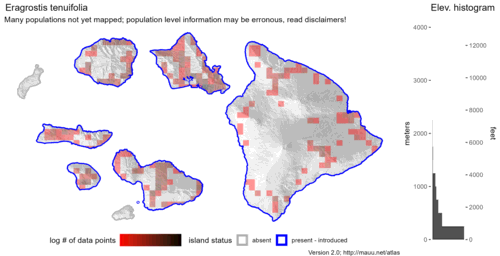

Inflorescence
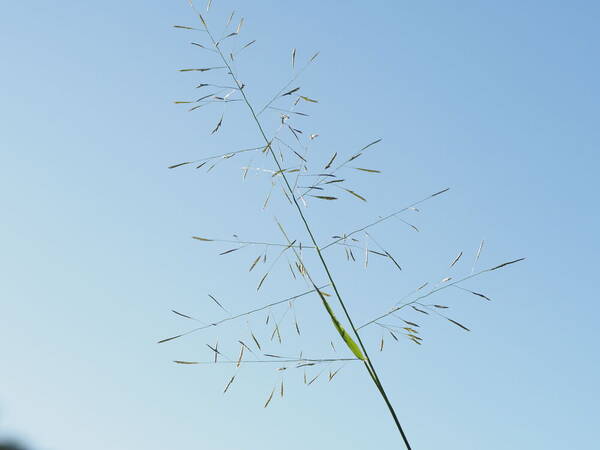
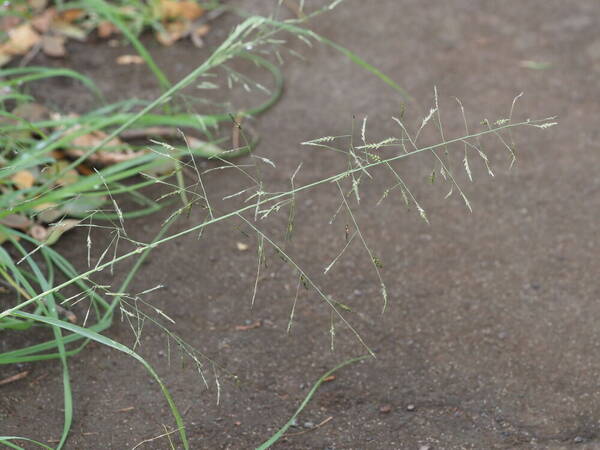
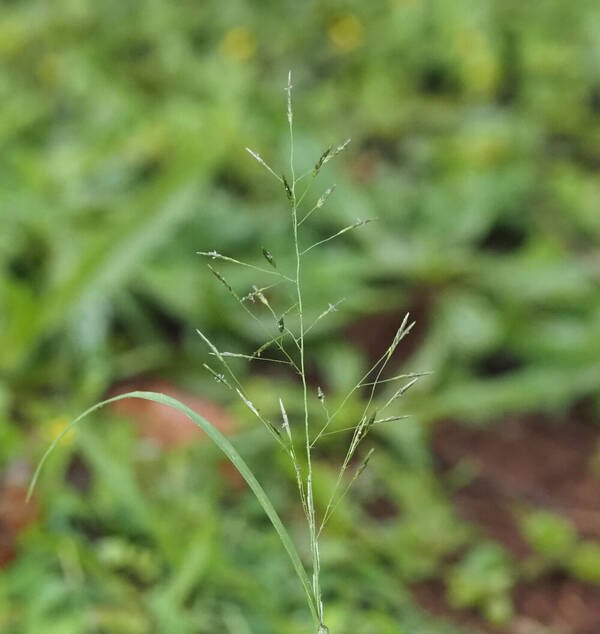
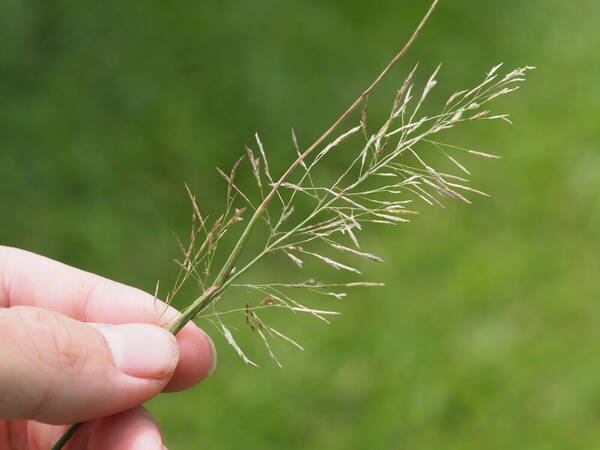
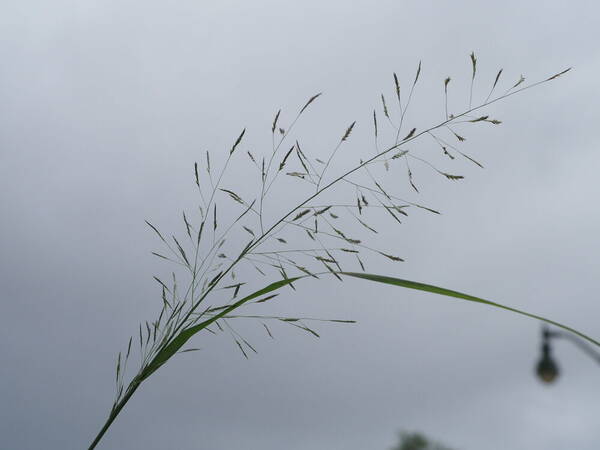
Plant

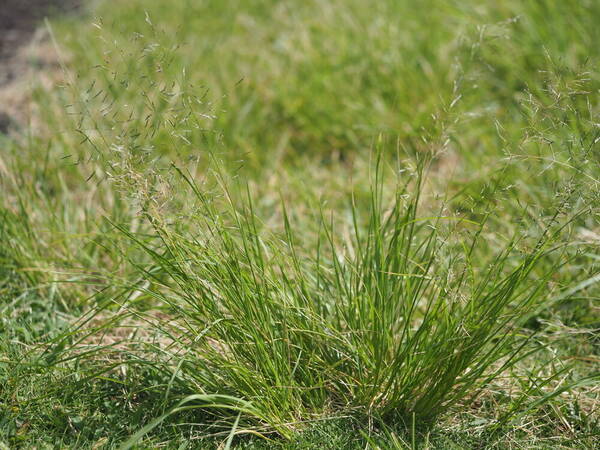
Spikelets
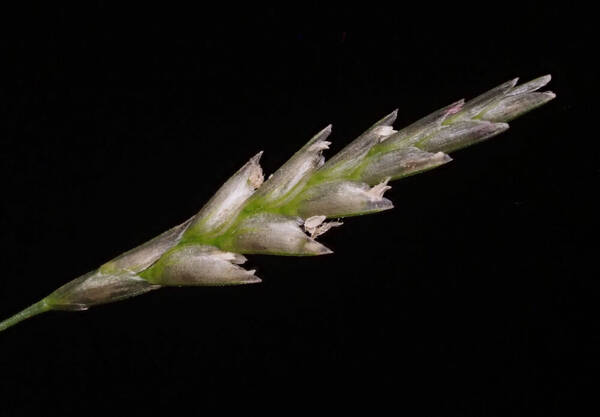
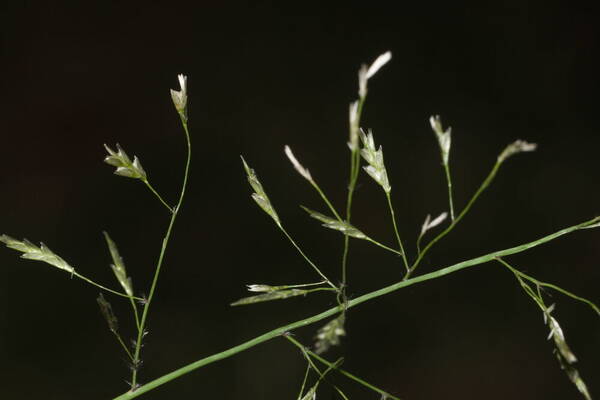
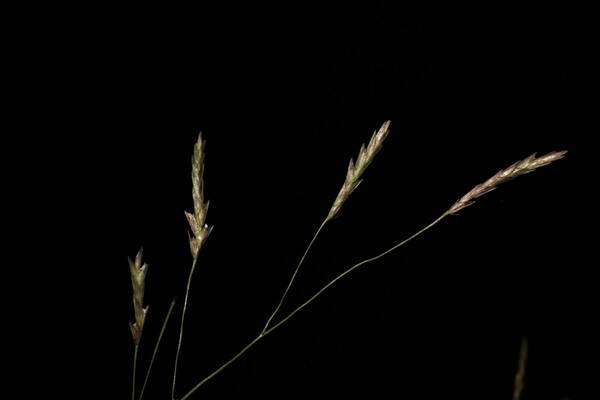
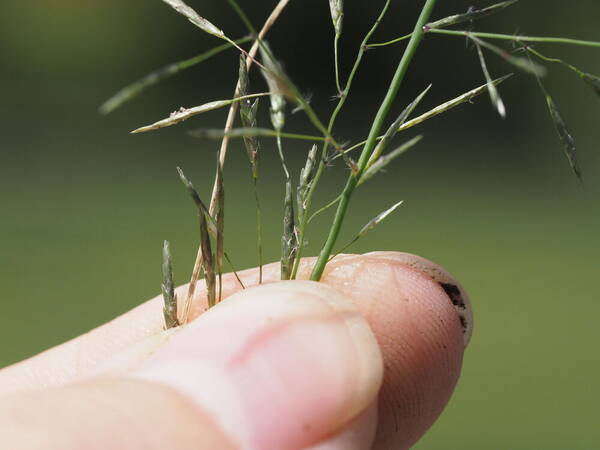

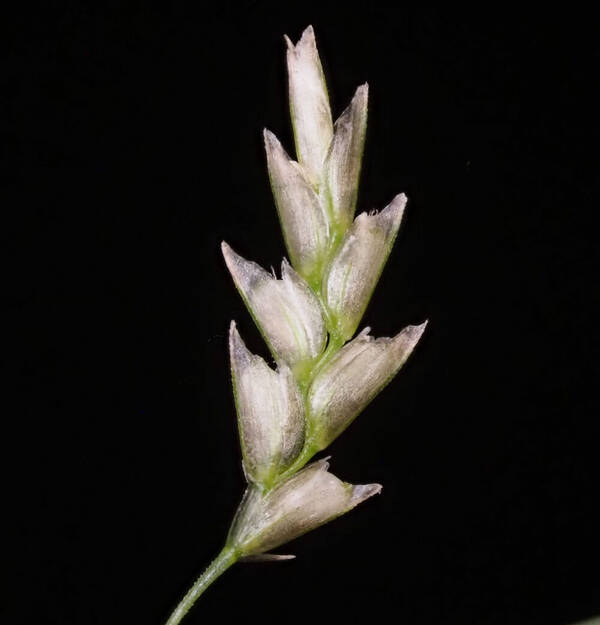
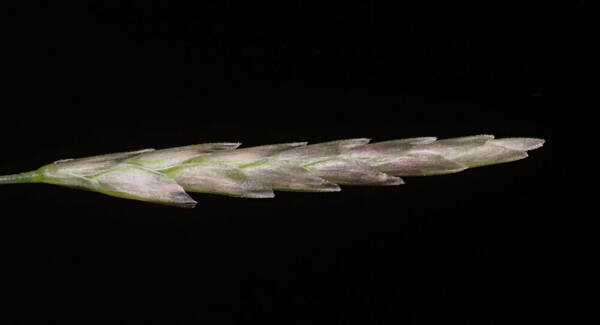
Description
Tufted perennial, the basal shoots laterally compressed; culms 10–70 cm. high, erect. Leaf-blades flat, 4–30 cm. long, 1–3 mm. wide, finely attenuate. Panicle narrowly elliptic, 5–20 cm. long, open, bearded or not in the branch-axils, the slender pedicels with or without a glandular ring. Spikelets 4–16-flowered, linear, 4–16 mm. long, 1–3 mm. wide, dark green, the florets at first appressed to the rhachilla, but later spreading and the spikelet-margin coarsely serrate, breaking up from the base, the rhachilla persistent; glumes lanceolate, unequal, the lower 0.5–1 mm. long, the upper 0.8–1.4 mm. long and barely reaching the base of the second lemma; lemmas oblong-elliptic, 1.7–2.5 mm. long, inconspicuously nerved, bluntly acute to narrowly obtuse; palea green, scaberulous on the keels, persistent; anthers 3, 0.5–0.9 mm. long. Caryopsis oblong, 1 mm. long, strongly laterally flattened. Fig. 62/8, p. 196.
(Description source: Clayton, W.D. 1970. Flora of Tropical East Africa. Gramineae (Part 1). Crown Agents for Oversea Governments and Administrations, London. 176 pp. )
Caespitose perennial without rhizomes or stolons; culms up to 70 cm tall, erect, strongly compressed below, unbranched, glabrous at the nodes, eglandular; basal leaf sheaths glabrous, firmly chartaceous, strongly compressed and keeled, eglandular or with punctate glands along the keel, persistent; ligule a line of hairs; leaf laminas 4–30 cm × 1–3 mm, linear, flat, thinly pilose, eglandular.Panicle 5–20 cm long, narrowly elliptic to narrowly ovate, loose and open, the spikelets evenly distributed on pedicels 3–7 mm long, these with or without an annular gland at about the mid-point, the primary branches not in whorls, terminating in a fertile spikelet, glabrous or pilose in the axils.Spikelets 4–16 × 1–1.5 mm (but opening out to 3 mm wide at maturity), linear, laterally compressed, 4–16-flowered, the lemmas disarticulating from below upwards, the rhachilla persistent; glumes unequal, barely reaching or shortly exceeding the base of the adjacent lemmas (the inferior never reaching as far as the middle, the superior sometimes doing so), keeled, narrowly lanceolate to linear-lanceolate in profile, glabrous, acute or rarely concave at the apex, the inferior 0.4–1 mm long, the superior 0.8–1.4 mm long; lemmas 1.7–2.5 mm long, keeled, narrowly semi-ovate in profile (with straight keel and gibbous margins), firmly membranous with ± distinct lateral nerves, appressed to the rhachilla at first, later widely diverging, those in opposite rows not imbricate, the rhachilla visible between them, dark green, glabrous, subacute to narrowly obtuse at the apex; palea persistent, glabrous on the flanks, the keels slender, wingless, scaberulous; anthers 3, 0.5–0.9 mm long.Caryopsis 0.9–1.1 mm long, oblong, strongly laterally compressed.
(Description source: Pope, G.V. (ed). 1999. Flora Zambesiaca. Volume 10. Part 2. Kew, London. 261 pp. )
Habit: Perennial; caespitose. Butt sheaths glabrous. Basal innovations flabellate. Culms erect; 10-70 cm long. Ligule a fringe of hairs. Leaf-blades 4-30 cm long; 1-3 mm wide. Leaf-blade apex attenuate. Inflorescences: Inflorescence a panicle. Panicle open; elliptic; 5-20 cm long. Panicle branches glabrous in axils, or bearded in axils. Spikelets solitary. Fertile spikelets pedicelled. Pedicels filiform; eglandular, or glandular. Spikelets: Spikelets comprising 4-16 fertile florets; with diminished florets at the apex. Spikelets linear; laterally compressed; 4-16 mm long; 1-3 mm wide; breaking up at maturity; rhachilla persistent; retaining paleas. Fertile Spikelets: Spikelets comprising 4-16 fertile florets; with diminished florets at the apex. Spikelets linear; laterally compressed; 4-16 mm long; 1-3 mm wide; breaking up at maturity; rhachilla persistent; retaining paleas. Glumes: Glumes deciduous; similar; shorter than spikelet. Lower glume lanceolate; 0.5-1 mm long; 0.5-0.6 length of upper glume; 1-keeled; 1 -veined. Lower glume lateral veins absent. Lower glume apex acute. Upper glume lanceolate; 0.8-1.4 mm long; 0.5-0.6 length of adjacent fertile lemma; 1-keeled; 1 -veined. Upper glume lateral veins absent. Upper glume apex acute. Florets: Fertile florets appressed to rhachilla (initially), or divergent; free at tip (serrate in outline). Fertile lemma elliptic, or oblong; 1.6-2.5 mm long; membranous; dark green; keeled; 3 -veined. Lemma lateral veins obscure. Lemma apex obtuse, or acute. Palea keels scaberulous. Apical sterile florets resembling fertile though underdeveloped. Flowers: Anthers 3; 0.5-0.9 mm long. Fruits: Caryopsis with adherent pericarp; oblong; laterally compressed (strongly); 1 mm long. Distribution: Africa: west tropical, west-central tropical, northeast tropical, east tropical, southern tropical, south, and western Indian ocean. Asia-temperate: Arabia. Asia-tropical: India, Indo-China, Malesia, and Papuasia. Australasia: Australia. Pacific: southwestern, south-central, and north-central. North America: Mexico. South America: Mesoamericana, western South America, Brazil, and southern South America.
(Description source: Clayton, W.D., Vorontsova, M.S., Harman, K.T. and Williamson, H. (2006 onwards). GrassBase - The Online World Grass Flora. Available at https://powo.science.kew.org )